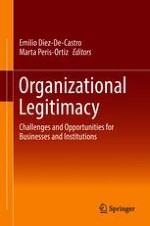
2018 | OriginalPaper | Chapter
1. Criteria for Evaluating the Organizational Legitimacy: A Typology for Legitimacy Jungle
Authors : Emilio Díez-de-Castro, Marta Peris-Ortiz, Francisco Díez-Martín
Published in: Organizational Legitimacy
Publisher: Springer International Publishing
Activate our intelligent search to find suitable subject content or patents.
Select sections of text to find matching patents with Artificial Intelligence. powered by
Select sections of text to find additional relevant content using AI-assisted search. powered by